Explore the art of smoking a ribeye roast to perfection, unlocking its juicy flavor and succulent tenderness.
Smoking a ribeye roast can transform this already delicious cut of meat into something truly spectacular, with a deep, smoky flavor that’s sure to impress at any BBQ.
The process involves selecting the perfect ribeye roast, preparing it with a dry rub, setting up your smoker for indirect cooking, and carefully monitoring the temperature throughout the smoking process.
Understanding how to rest your smoked ribeye roast is also crucial to lock in the juices and flavors.
This article offers detailed guidance on each of these steps, ensuring you can smoke a ribeye roast to perfection.
Key takeaways:
- Select a ribeye roast with good marbling for optimal flavor.
- Consider the size of the roast based on the number of people you’re serving.
- Decide whether you want the cap on or off the roast.
- Choose a bone-in roast for enhanced flavor when smoking.
- Rest the smoked ribeye roast for at least 20 minutes before carving.
What Is A Ribeye Roast
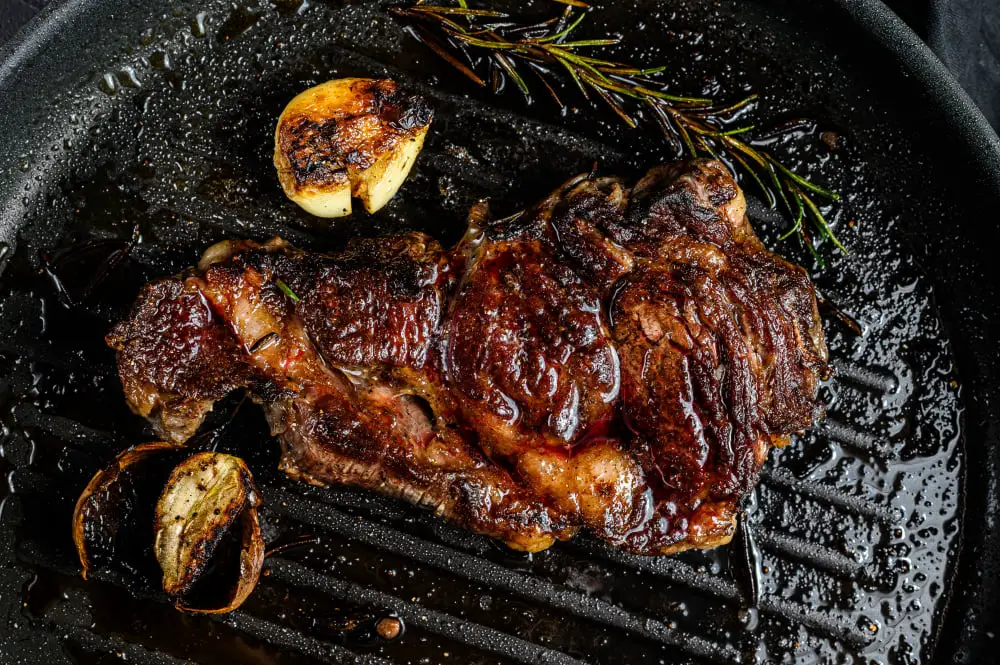
A Ribeye Roast, also known as a Prime Rib Roast, comes from the rib section of a cow, specifically between the sixth and twelfth ribs. Typically, a full Ribeye Roast includes seven ribs, but smaller cuts are also available. The Ribeye Roast boasts rich marbling, which denotes the fat interspersed with the lean meat. This trait contributes to the signature tenderness and flavor of the meat when cooked.
This particular roast is often identified by its rib eye muscle which extends through the full length of the roast. The eye muscle is encased by a rounded, outside cap, or lip, which is harvested from the primal rib and contains two major muscles. It’s important to note that this cut is one of the most desirable – and correspondingly expensive – due to its premium tenderness and flavor.
From selection to preparation, it’s important to consider the size (which can range from 2 ribs to the full 7), whether you prefer cap on or off, and the marbling of your roast. For smoking specifically, a bone-in Ribeye Roast is often chosen for enhanced flavor.
Steps to consider when dealing with Ribeye Roast:
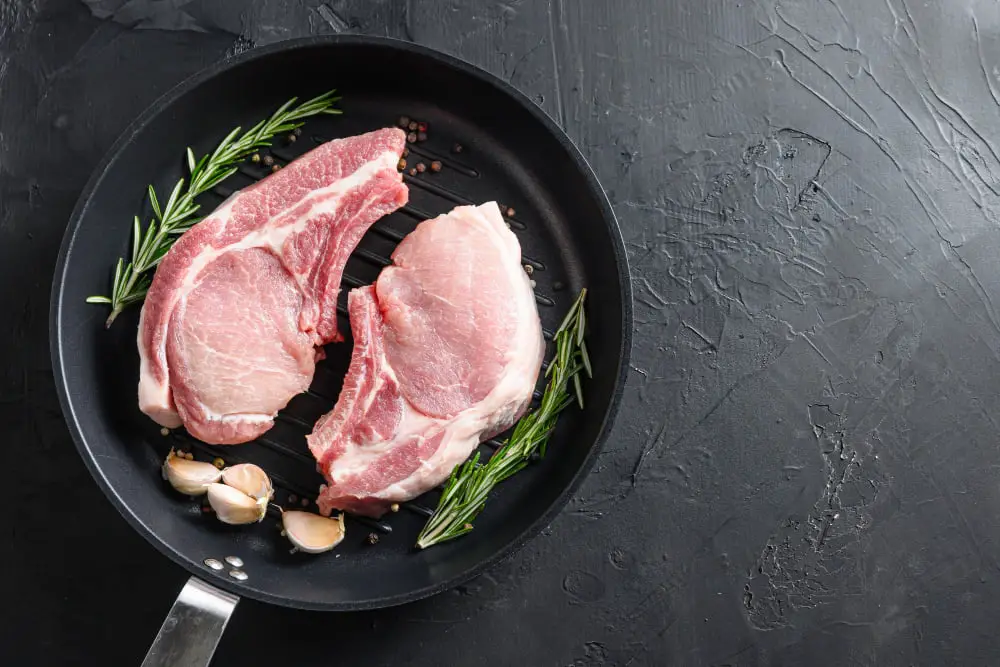
- Purchase: Choose a roast with good marbling (significant streaks of fat), as these are more flavorful.
- Size: Decide on the size you want – this will depend on how many people you’re serving.
- Cap Preference: Consider whether you want a roast with the cap on or off – this is mostly a matter of personal preference.
- Bone-in or Boneless: A bone-in roast is often chosen for smoking, as the bone enhances the flavor.
- Preparation: Plan how you’ll season and prepare your roast before smoking.
It’s also worth noting that although ribeye roast is perfect for smoking, it can also be roasted, braised, or grilled to perfection. The versatility of this particular cut makes it a favorite for many BBQ enthusiasts.
How To Buy A Ribeye Roast
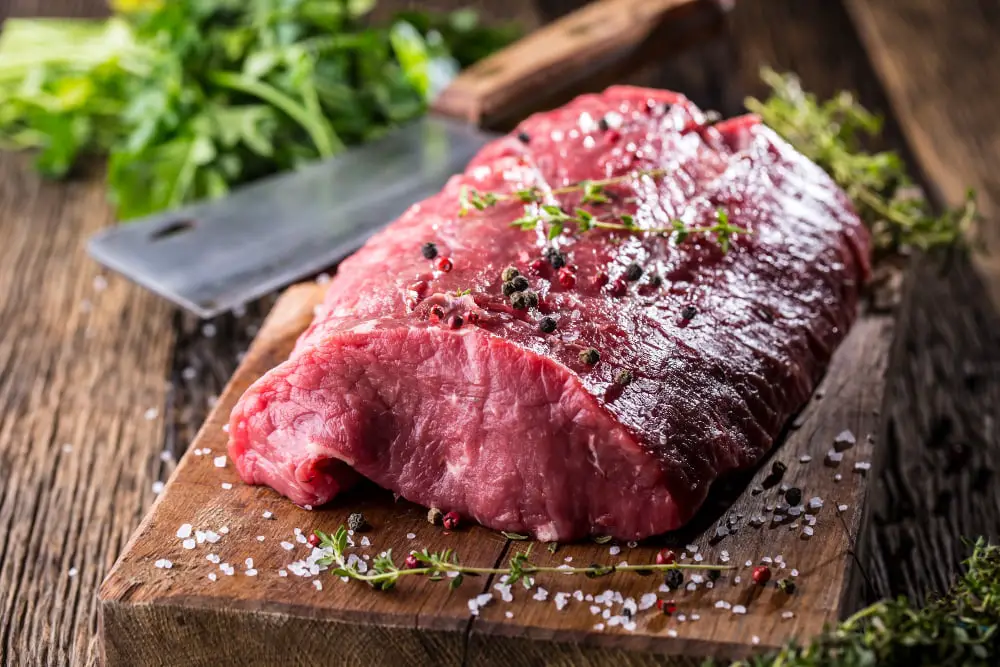
Buying a ribeye roast takes a few key considerations.
It’s best to opt for a USDA Prime or Choice grade for high quality, tenderness, and marbling. These grades provide excellent quality meat and the right degree of marbling for juicy and flavorful results.
Consider whether you want bone-in or boneless roast. Bone-in ribeye roast generally has more flavor, although boneless can be easier to carve.
Remember to check the thickness. For smoking, look for roasts that are at least 3-4 inches thick. This will allow the smoking process to work its magic, imbuing the meat with a smokey flavor without drying it out.
Investigate the color. Quality ribeye roasts will have a bright, rosy color. Avoid cuts that are dark or dull.
Size is critical. Expect about half to three-quarters of a pound per person when buying a ribeye roast, depending on what else you’re serving.
Always buy from a reputable butcher, where you can also ask for advice and specify what you’re looking for. After all, they are the experts in their field, and their guidance can prove invaluable.
How Big a Ribeye Roast Should I Buy to Smoke?
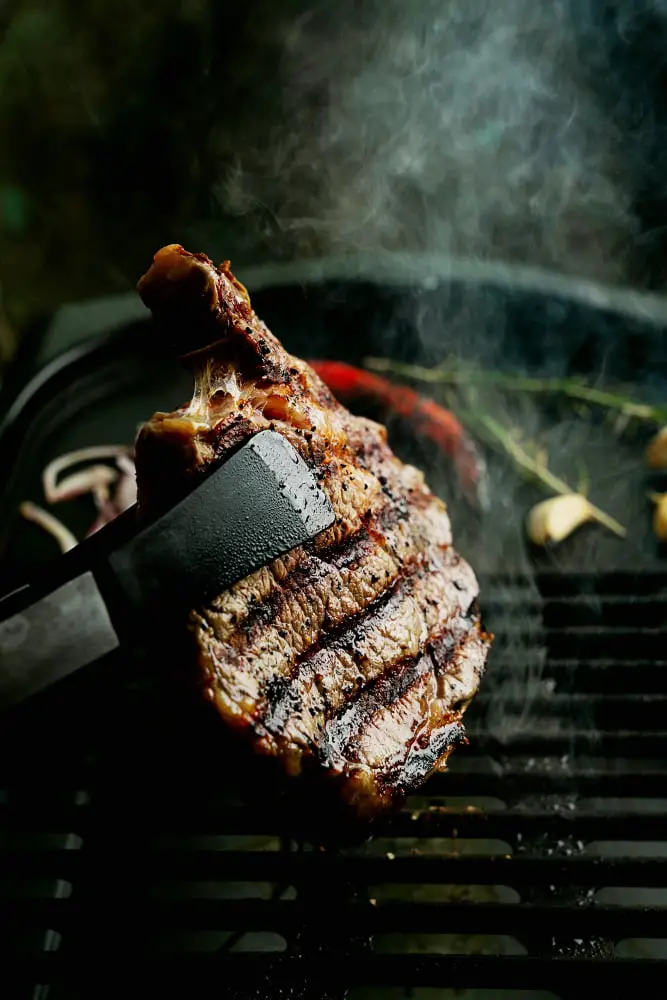
When it comes to choosing the size of your ribeye roast to smoke, a few considerations should be taken into account. The number of people you’re serving is a central factor. On average, plan for about half a pound of meat per guest. This allows for those with bigger appetites and factors in the reduction in size from smoking.
A ribeye roast is a hefty cut of meat. While smaller roasts are available, a general rule of thumb is that a whole ribeye roast can weigh between 12 to 16 pounds, providing around 24 to 32 servings.
Remember, the density of the meat also affects cooking time. It’s possible to smoke a larger roast, but keep in mind it will take longer to reach the optimal internal temperature.
On the other hand, if you’re hosting a smaller gathering, you could opt for a ribeye steak rather than a roast. This smaller cut will smoke faster and it can still give guests that desirable smoked flavor.
When choosing your roast at a butcher shop or grocery store, also look for good marbling. This is the distribution of fat throughout the meat and is essential for a juicy, tender finished roast. Your butcher can help guide you towards the best selection.
Ribeye Roast Cap On Vs. Cap Off

The Ribeye Roast comes with a choice between two preparations: Cap On or Cap Off, which you can usually specify while purchasing. Both have unique characteristics.
Cap On means the outer layer of fat and muscle, known as the cap, is left intact. It covers one side of the roast and adds rich flavor during smoking. The fat melts into the meat itself, naturally basting and keeping the roast moist and flavorful. This option is fantastic for those who enjoy a richly flavored roast.
In contrast, the Cap Off version has this layer removed, revealing more of the meat’s surface. It allows for more direct exposure to smoke, potentially infusing more flavor depending on the type of wood you’re using. The absence of the cap can make the meat a bit leaner in texture, which some prefer.
For a balanced flavor profile, you may want to consider scoring the cap instead of removing it entirely. This way, the smoke has a way to permeate the meat, and you still enjoy the benefits of the fat cap layer. To score, make shallow cuts across the surface of the fat cap in a diamond pattern.
Ensure to plan ahead in terms of seasoning these cuts, as the cap on version will require more aggressive seasoning to penetrate the fat layer, while the cap off version could be seasoned lightly.
How to Prepare a Ribeye Roast for the Smoker
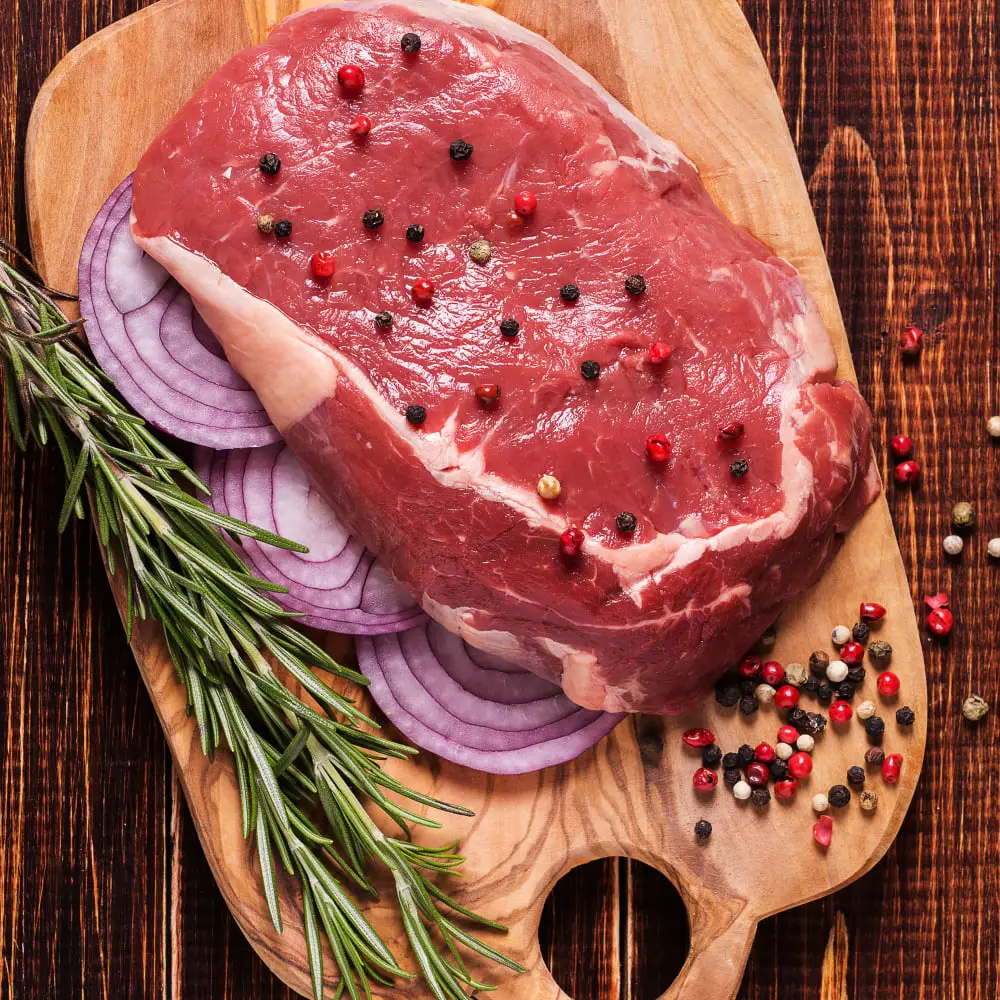
Begin by thoroughly defrosting your ribeye roast, if necessary. Securely wrap it in a layer of plastic and place in the refrigerator for at least 24 hours. This will ensure even smoking throughout the cut. Once defrosted, allow the roast to reach room temperature, approximately an hour, before seasoning.
While the roast is coming to temperature, start preparing your seasonings. A simple dry rub consisting of kosher salt, black pepper, and a touch of garlic powder works well with the robust flavors of ribeye. For a spicy kick, also consider adding paprika or cayenne pepper.
Next, pat the entire roast dry with paper towels. Surfaces that are too wet will result in a steamed effect rather than a delicious smoked crust. After patting the roast dry, apply the dry rub liberally on all sides. Create a firm crust of seasoning that will keep the natural juices in the roast and help develop a rich, smoky flavor.
Optionally, tie your roast using butchers’ string. Tying helps keep the roast in a more uniform shape, enabling even smoking and cooking. It can also help prevent the roast from falling apart during the cooking process.
Finally, plan to let the roast rest with the rub for about an hour before it goes into the smoker. This gives the flavors from the rub time to penetrate the meat. Avoid skipping this step, as it can lead to a lacklustier flavor profile.
Once your roast is seasoned and rested, it’s ready to go into the smoker!
Top Seasonings and Marinades for Smoked Ribeye Roast
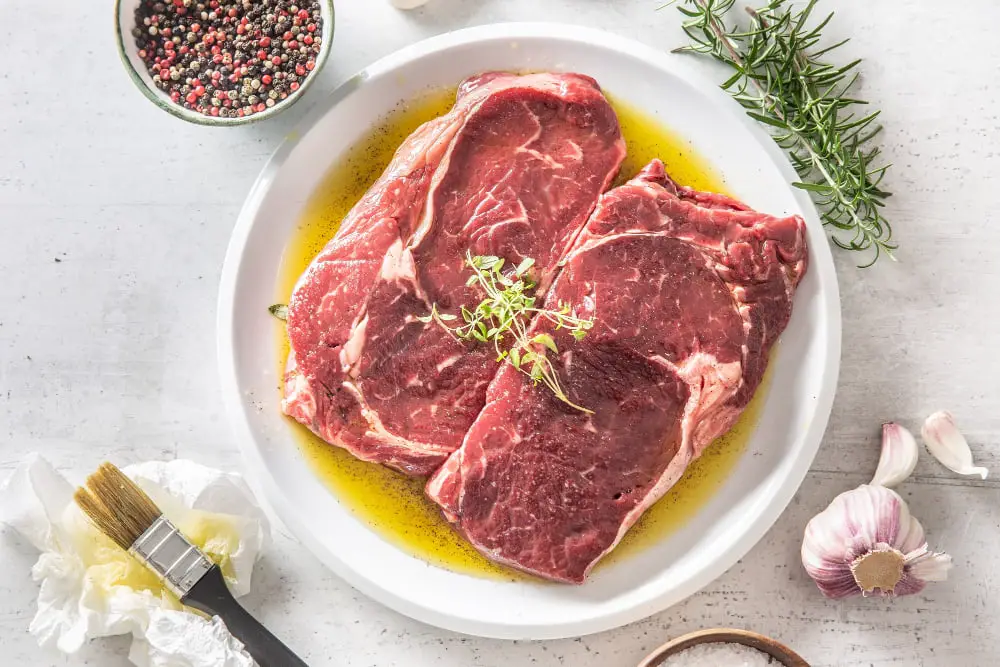
When preparing your ribeye roast for smoking, you’ll want to use a seasoning or marinade that complements the rich flavors of the meat.
A basic dry rub made from equal parts salt, black pepper, and garlic powder is a great place to start. Apply this liberally on all sides of the roast, pressing gently to adhere.
If you want to impart a spicy kick, add cayenne pepper and smoked paprika to the mix.
For a more complex flavor profile, try a combination of brown sugar, chili powder, dried mustard, and cumin.
Homemade marinades can also impart a deeper flavor into the ribeye roast. A simple marinade consists of olive oil, minced garlic, lemon juice, soy sauce, and honey. Combine all ingredients in a bowl, and then immerse the roast in this mix. Allow it to marinate for several hours or overnight in the refrigerator.
Remember to remove your roast from the fridge about an hour before smoking to allow it to come to room temperature for even cooking.
Add some fresh herbs, like rosemary or thyme to infuse additional flavor as the roast smokes.
Each of these options will add its unique twist to the flavors of your smoked ribeye roast. Mix and match to find your ideal combination.
Setting Up Your Smoker for a Smoked Ribeye Roast
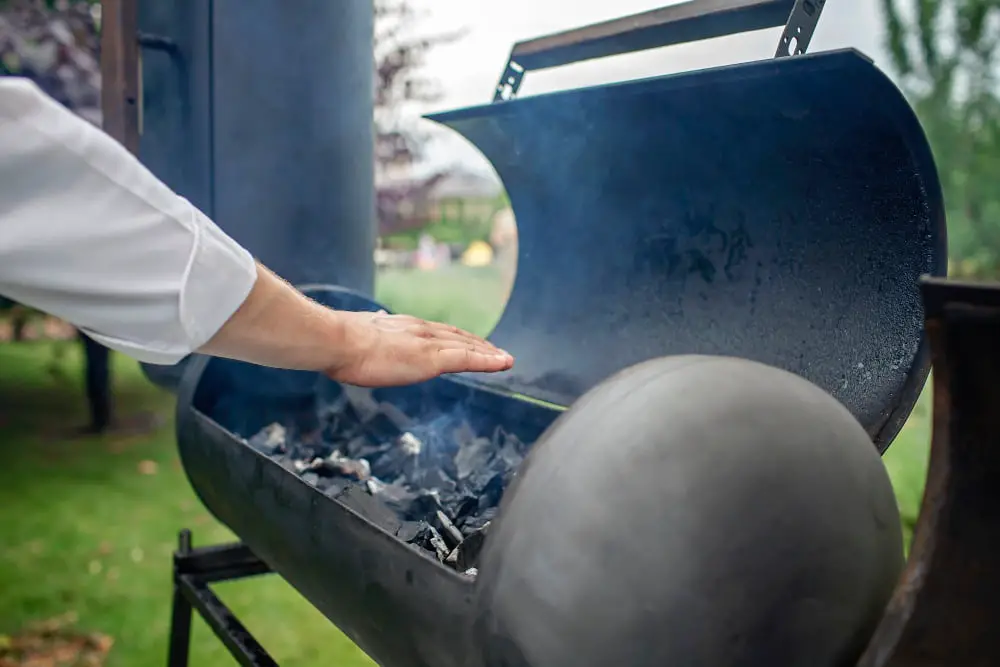
Before smoking the ribeye roast, ensure that the smoker is clean; old ashes and grease can influence the flavor of the meat.
Now, you need to preheat your smoker. A ribeye roast requires a medium to high temperature, around 225-250°F (107-121°C).
While the smoker is preheating, place your wood chunks on the coals or in the smoker box. Hickory, mesquite, or oak are all excellent choices for beef as they provide robust flavors that complement the rich taste of the ribeye roast. Avoid lighter woods like apple or cherry, as they might not be able to stand up to the strong flavor of the beef.
The water pan should be filled halfway with water, which helps to maintain a stable temperature inside the smoker and adds a degree of humidity, promoting a moist environment.
Lastly, it’s crucial to consider the arrangement of the meat inside the smoker. When you place the roast in the smoker, it should be situated on the center rack, far from direct heat. This method allows for a more even distribution of heat, ensuring a uniform cooking process.
Remember, maintaining a steady temperature throughout the cooking process is key to achieving a perfectly smoked ribeye roast. If you see the temperature dipping, add more coals; if it’s getting too high, vent some of the heat.
Best Smoking Wood Choices for a Ribeye Roast
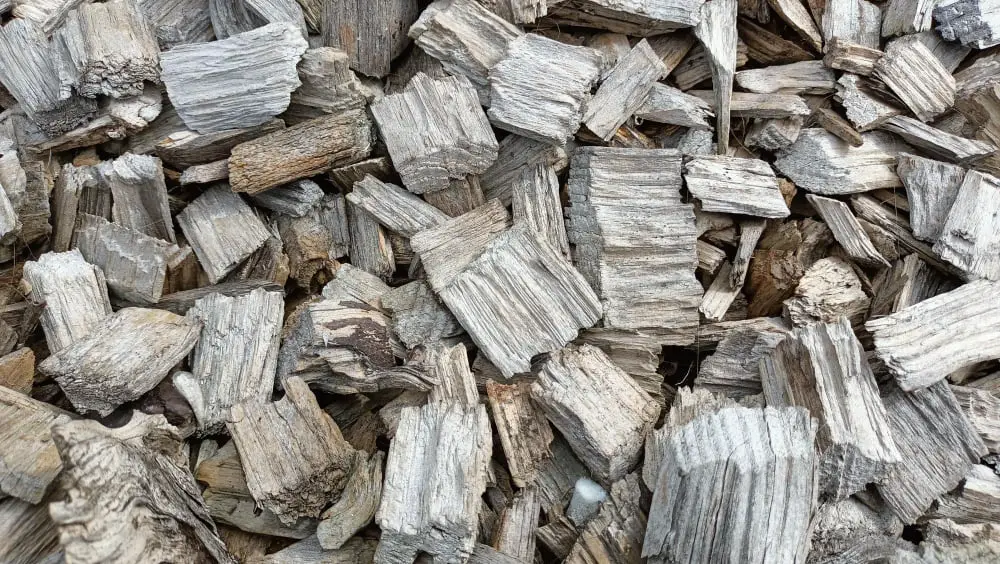
There’s much to consider in the realm of smoking wood choices. You want to find the perfect balance that complements the ribeye’s rich flavor without overpowering it. Some wood choices can work better than others for this.
Hickory is a classic option, adding a robust, bacon-like taste that resonates well with red meat. It’s a versatile choice and widely available.
Mesquite, denser and more pungent, renders a strong, sharp, and spicy flavor. Use it sparingly and perhaps mixed with a milder wood, to prevent it from masking the ribeye’s natural taste.
Applewood imparts a mild, slightly sweet, fruity flavor, which tends to pair well with the ribeye’s richness.
Oak is another great choice, being strong but not overwhelming, and offers a subtle touch of sweetness.
Remember, the choice ultimately lies with personal preference, influenced by regional availability of wood and desired flavor profiles. It never hurts to experiment and find the blend that suits your palette best.
Best Times and Temperatures for Smoking a Ribeye Roast
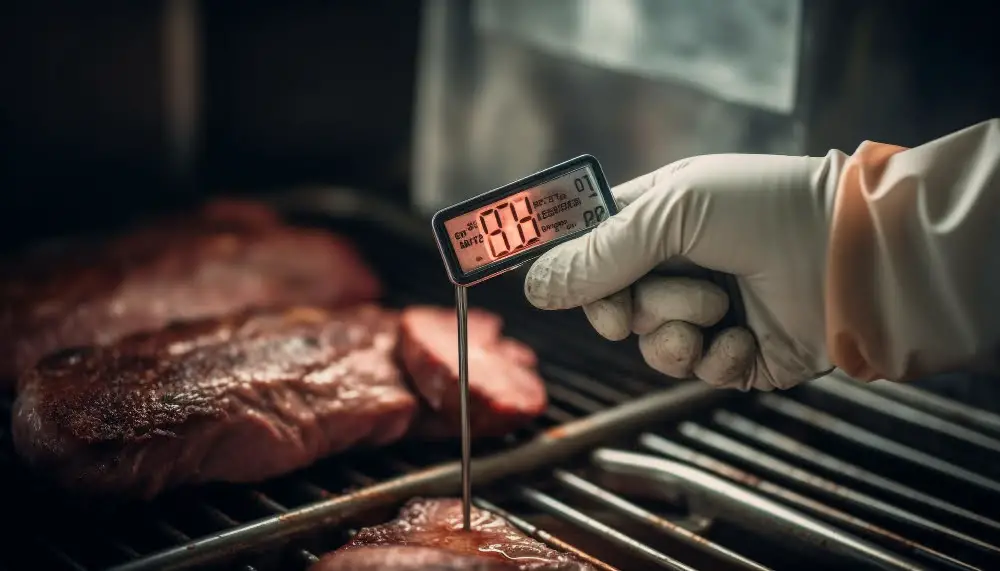
To ensure a succulent, juicy ribeye roast, temperature control is essential. Your smoker should maintain an even, low heat of about 225°F, giving your meat enough time to soak up the smoky flavors without getting overly done.
For the roast itself, aim for an internal temperature of 130°F, which will give you a medium-rare finish. Using a meat thermometer is crucial to achieving this ideal temperature without having to frequently open your smoker, which can disrupt the cooking process.
Remember, once removed from the smoker, the roast will continue to cook, its residual heat raising the internal temperature by about 10 degrees. So, it’s advisable to pull the meat out of the smoker when the thermometer reads 120°F for a final medium-rare result.
Finally, rest the roast for at least 20 minutes before carving. This allows the juices to redistribute throughout the meat, enhancing its flavors and tenderness.
These steps are keys in mastering the right timing and temperature for smoking a ribeye roast:
- Maintain the smoker temperature at 225°F
- Monitor roast’s internal temperature aiming for 120°F
- Let the roast rest after smoking for at least 20 minutes before carving
- Use a meat thermometer to check temperature without having to open the smoker frequently
Smoked Ribeye Roast Recipe
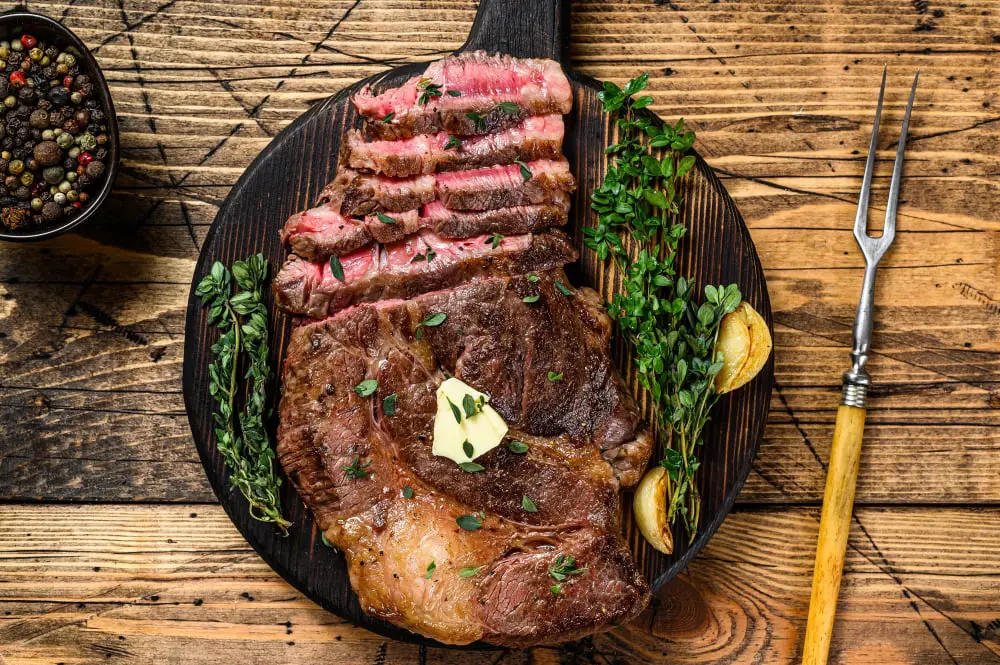
Begin by applying a mix of kosher salt, black pepper, garlic powder, and paprika all over the roast. Ensure to cover every inch of the roast for a flavorful exterior when smoked.
Now, heat the smoker to 225°F. Place a pan with water at the bottom of your smoker to create a damp environment which helps in keeping the roast juicy.
Place the seasoned roast on the grill grate, fat side up. Insert a digital probe meat thermometer into the thickest part of the roast, to monitor internal temperature without having to open the smoker.
Next, close the smoker and let the ribeye roast cook. The key point here is ‘low and slow.’
The desirable internal temperature for a medium-rare roast is 130°F. A ribeye roast can take up to 3—4 hours to reach this temperature.
Lastly, when your roast reaches the desired internal temperature, remove it from the smoker. It is important to allow the smoked ribeye roast rest for 15—20 minutes before slicing. This ensures that the juices redistribute within the roast making it tender and juicy.
For added flavor, melt some butter, mix in finely chopped rosemary and minced garlic. Baste this melted butter over the smoked ribeye roast during the resting period.
Remember, smoking a ribeye roast is more about temperature than time. Patience is key to achieving that perfectly smoked ribeye roast.
Can You Reverse Sear a Smoked Ribeye Roast?
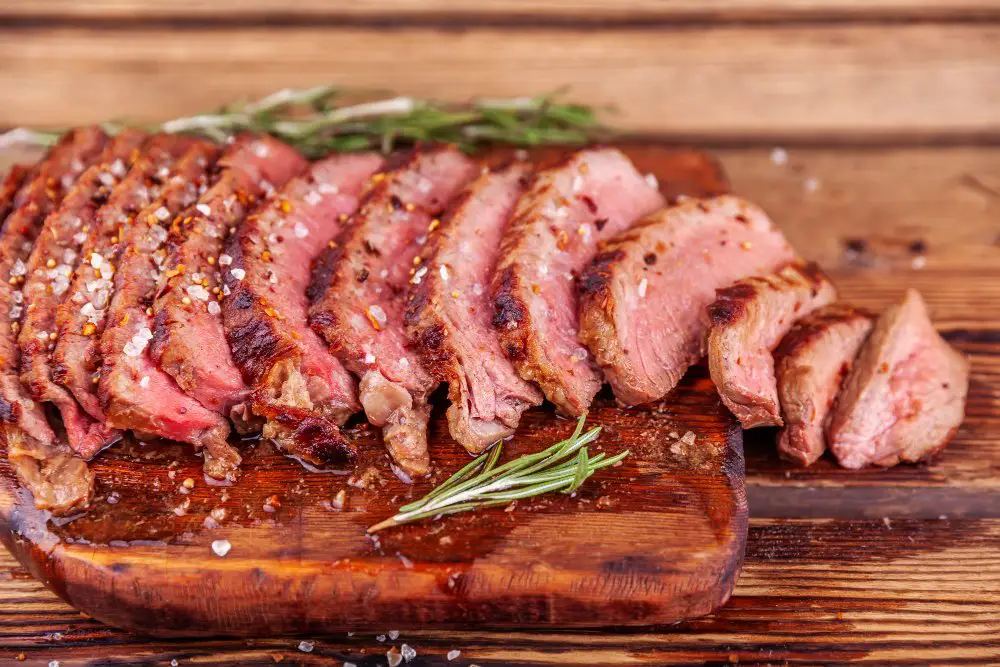
Certainly, reverse searing a smoked ribeye roast is an effective technique for achieving a beautiful crust and an evenly cooked interior. Here’s how to do it:
First, smoke the roast as usual until it reaches an internal temperature of about 10-15°F below your desired end temperature. This prepares the roast for the searing process. Once this temperature is reached, remove your roast from the smoker.
While the roast is resting, increase the heat in your smoker to 500°F or prepare a high-heat section on your grill. This high heat is essential for the searing process.
After resting for 10-15 minutes, return the roast to the smoker or place it on the grill. Sear each side for about 2 minutes, or until you achieve a crispy, caramelised crust.
Monitor the internal temperature carefully, the roast will continue to cook internally even during searing.
Removing the roast from the heat at the correct temperature is vital for a perfect finish. For medium rare, aim for an internal temperature of 130-135°F; for medium, aim for 140-145°F.
After searing, let the roast rest again for around 10-15 minutes before serving. This allows the juices to redistribute throughout the roast, ensuring a moist and flavourful result.
Keep in mind, every roast and every smoker is unique, so these guidelines might need slight adjustments depending on your specific circumstances. The key is to monitor the temperature and adjust accordingly.
How to Carve and Serve a Smoked Ribeye Roast
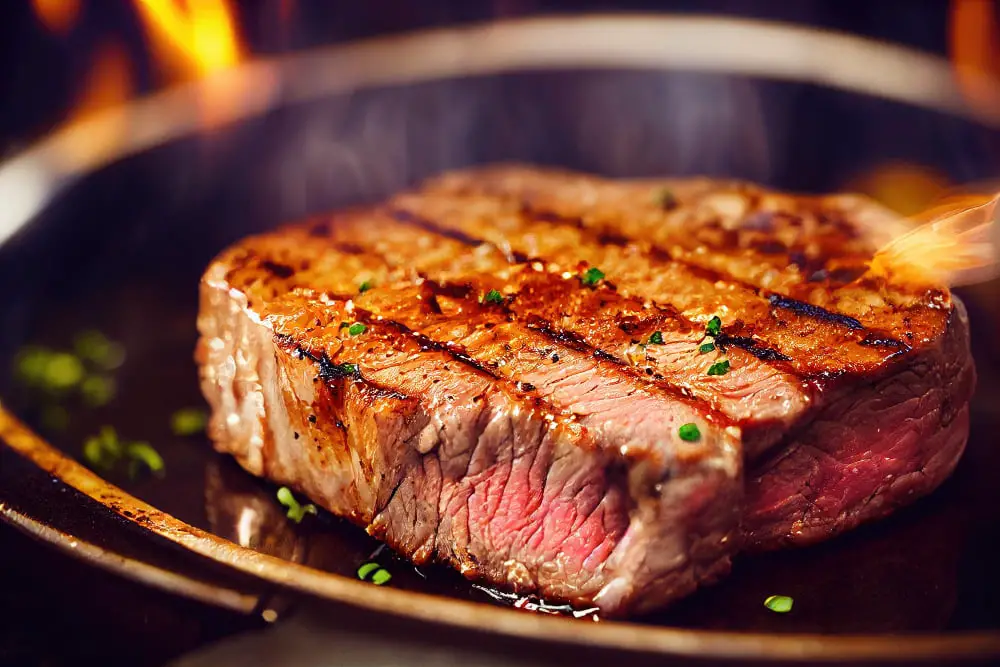
Firstly, allow the smoked ribeye roast to rest for at least 20 minutes before you begin slicing. This resting period allows the meat juices to redistribute and ensures a juicy, moist roast.
To carve, find the direction of the grain – the direction that the muscle fibers run. Make your cuts perpendicular to the grain. Attempting to cut parallel to the grain results in tougher slices of meat.
Start cutting thin slices, about 1/4 to 1/2 inch thick, depending on your preference. If there are any large pieces of fat or connective tissue, trim them off as you work through the roast.
To serve the carved ribeye roast, arrange the slices on a platter where they can be easily picked up by your guests. You can also pour any accumulated juices over the meat for added flavor.
Pair the smoked ribeye roast with your chosen side dishes. Since ribeye roast is rich and savory, you can balance it with light, fresh sides – think a green salad or roasted vegetables.
Finally, if you prepared any accompanying sauces, such as a horseradish cream or a red wine reduction, serve them in a separate bowl or pitcher for guests to drizzle on their portions.
Serving Suggestions for Smoked Ribeye Roast

Complement the rich and smoky flavors of your ribeye roast with these serving suggestions:
- Char-Grilled Vegetables: Grill vegetables like asparagus, bell peppers, and zucchini on the smoker alongside your roast for a convenient side dish. Their natural sweetness will balance out the smoky flavor of the beef.
- Classic Mashed Potatoes: Serve with creamy mashed potatoes for a comforting and traditional choice. The buttery flavor pairs well with the robust taste of the smoked ribeye roast.
- Crusty Bread: Fresh, crusty bread can be great for mopping up any juice from the roast, making sure every bit of flavor is savored.
- Chilled Sides: For a refreshing contrast, consider cucumber salad or coleslaw. These chilled, tangy sides can cut through the richness of the meat.
- Red Wine: Full-bodied red wines like Cabernet Sauvignon hold up nicely against the strong, meaty flavor of the ribeye.
Finally, always keep a tangy BBQ sauce or rich gravy on hand. Some people prefer to drizzle this over their slice of ribeye, adding a touch of moisture and an additional punch of flavor.
FAQ
How long to smoke a ribeye roast at 225?
A ribeye roast should be smoked at 225°F for approximately 6 hours to achieve optimum flavor.
Is ribeye roast good on smoker?
Yes, ribeye roast is excellent when smoked, benefiting from a long smoking time of at least 3-4 hours for deep, smoky flavor and tender, fall-off-the-bone meat.
How long does it take to smoke a 4 lb ribeye roast?
To smoke a 4 lb ribeye roast, it typically takes between 6 to 8 hours at a temperature range of 200 to 225 degrees Fahrenheit until the internal temperature reaches 140 degrees Fahrenheit.
How long to smoke a 3 pound ribeye roast?
A 3 pound ribeye roast should be smoked for approximately 3-4 hours, until it reaches an internal temperature of 135℉ for a rare finish, or 145℉ for medium, then allowed to rest for 20 minutes before carving.
What type of wood is best for smoking a ribeye roast?
For smoking a ribeye roast, hickory wood is often considered the best due to its strong, distinct flavor that complements the rich taste of the meat.
Should I use a dry rub or a marinade for a smoked ribeye roast?
For a smoked ribeye roast, using a dry rub is typically preferred as it creates a flavorful crust while allowing the smoky flavor to penetrate better.
What is the ideal internal temperature for a smoked ribeye roast?
The ideal internal temperature for a smoked ribeye roast is 135°F for medium-rare.
